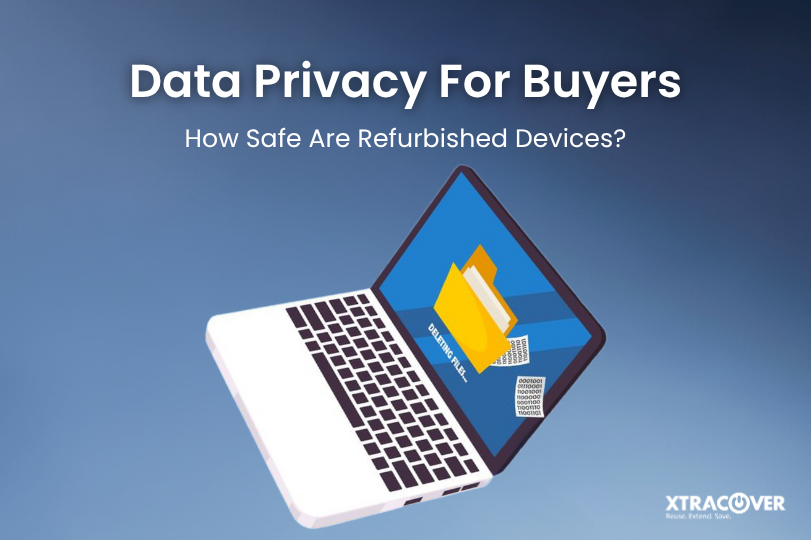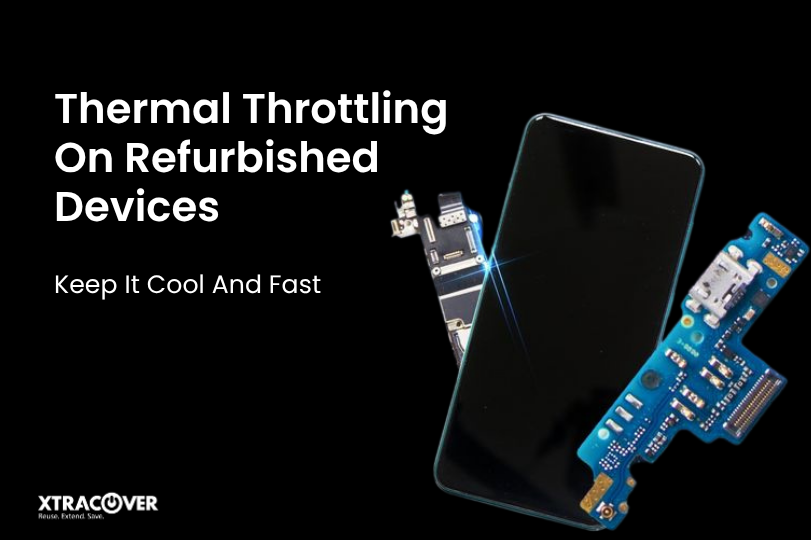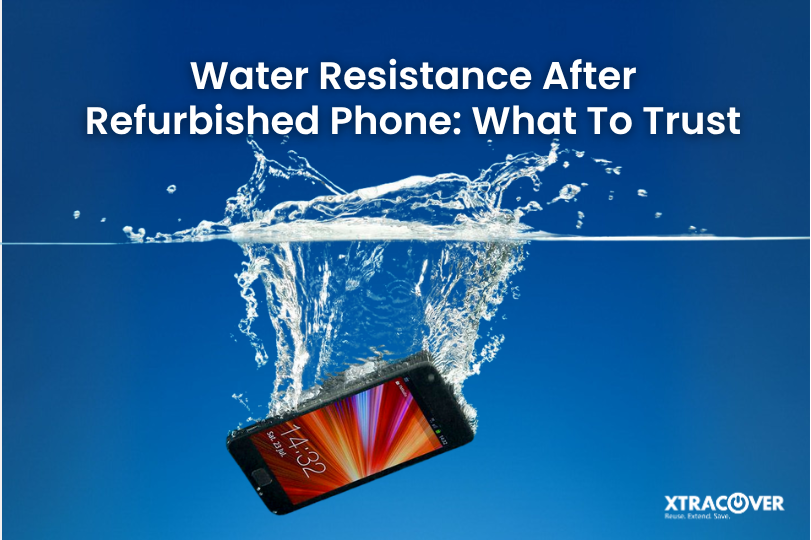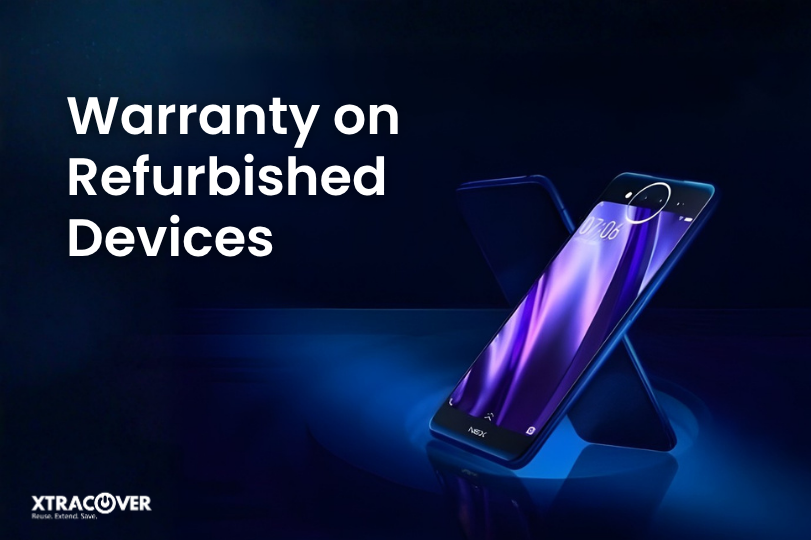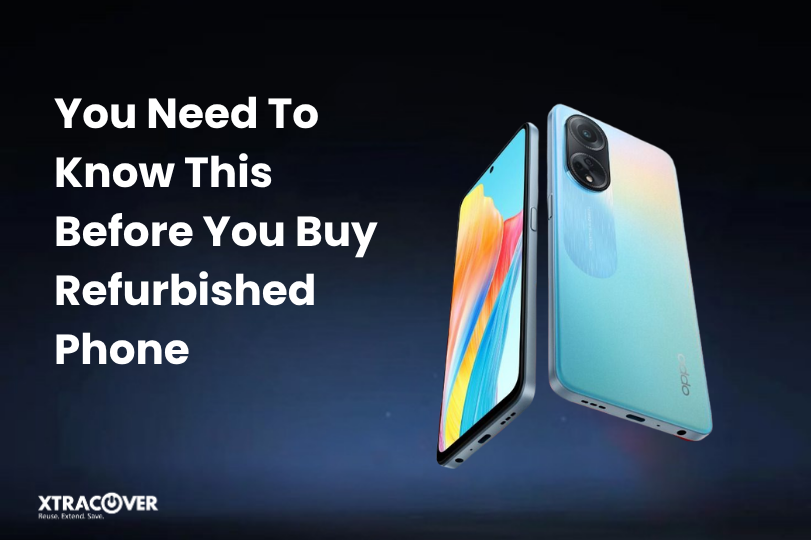Summary: Pick refurbished phones only from reliable vendors like XtraCover, who offer a proper guarantee. Look over the device for scuffs, test the battery life, camera quality, and signal strength, then make sure the system is updated and unlocked for any network. In India, confirm it supports local 5G bands and comes with a return option. A refurbished phone from XtraCover that’s been fully checked can run just as smoothly as a brand-new one for a fraction of the cost.
Wondering whether grabbing a used phone is smart – yet clueless on spotting the good ones? You’ve landed correctly. No matter if you’re inspecting the device for your own use or grabbing one as a gift, understanding the key details helps dodge headaches later – plus keeps cash in your pocket.
Here’s the deal: getting a used phone might make sense – though it depends on doing your homework first. We’ll go over how to inspect one well, while also pointing out red flags, so you end up feeling sure instead of stressed.
Why Go for a Refurbished Phone?
Refurbished phones have gained popularity for a reason. They give top-tier perks but don’t charge top money. Say you’re checking out a flagship phone made by Apple, Samsung, or OnePlus – buying it fresh could set you back quite a bit. A refurbished phone lets you access similar specs at a more manageable budget.
In markets like India, where price-sensitivity is high and new flagships can cost a fortune, buying a “buy refurbished mobiles India” model or a “refurbished 5G phones India” handset becomes even more attractive. The trick is making sure you’re not compromising quality just to save money.
Step-by-Step Checklist for Evaluating a Refurbished Phone
1. Verify the Seller and Warranty
Before you even open the box, check who you’re buying from. A reputable seller that offers a warranty is far better than someone offering rock-bottom prices with no accountability. Trusted sellers will:
- Provide a return policy and warranty (ideally 6-12 months or more)
- Clearly indicate what “refurbished phone” means in their context, did they replace the battery, screen, all components, or just clean and reseal?
- Display device condition grading (like “excellent”, “good”, “fair”) so you know what you’re getting.
If the seller is sketchy, the price is suspiciously low, or there’s no warranty, proceed with caution.
2. Inspect the Physical Condition
Now let’s get hands-on (or ask for detailed photos if buying online). A “refurbished phone” should still look and feel solid. Here’s what to check:
- Screen: any scratches, cracks, dead pixels or discoloration?
- Frame, buttons and ports: are volume/power keys working cleanly? Are ports aligned, clean and undamaged?
- Back panel and camera lens: Are there dents or cracks? Is the camera lens scratched?
- Water damage indicators: If your phone has them, check for any signs of moisture or corrosion.
Small blemishes are acceptable in many refurbished phones, but anything that screams “dropped a lot” or “cheap repair job” is a red flag.
3. Check Battery Health and Usage
Battery health’s a bigger deal than folks think. Since some fixed-up phones come with new batteries while others keep the original one, it really pays to check what you’re getting. Here’s why that counts:
- Open Settings on your iPhone, choose Battery, and hit Battery Health next. Check the power level shown – roughly 85% or higher? That’s a sign it’s holding up just fine
- On Android phones like Samsung or OnePlus, try the phone’s own tools – or grab a handy app from the store – to see how many times the battery’s been charged, how strong it is now, also if it drains fast.
Check if they swapped the battery when fixing it up – some folks mention that bit.
If your battery’s in bad shape – or you’ve got no clue how it’s doing – you could end up with a device needing repairs faster than expected, so skipping the extra cost upfront doesn’t really help.
4. Test Functionality of Key Features
Next you want to test the core components. These are things people often overlook. On a refurbished phone, make sure:
- Touchscreen responsiveness is smooth, no dead zones.
- Speakers and microphone work clearly, play music, make a call, record voice.
- Camera quality is good: try back and front cameras in different lighting conditions. Check for weird artefacts, blur or lens damage.
- Signal’s strong – cell service, wireless internet, or Bluetooth won’t let you down. Every detector like motion tilt, close-up check, or face scan login runs smooth.
If one of those things seems off, maybe the repair was done poorly or they used fake parts instead.
5. Software, Authenticity and Status Check
You want to make sure the phone isn’t just physically okay but also clean in software and legitimate. Here are things to verify:
- On an iPhone: in Settings → General → About → Model number. If the first letter is “F”, it’s refurbished; “M” means new; “N” means replacement device.
- Check if the phone is carrier locked or has any blacklisted status (IMEI etc) when possible. It’s especially important in markets like India.
- Update to latest OS version. If the phone is too old or no updates available, you may face security or performance issues later.
6. Evaluate Grade and Price
Lastly, what this really means is you should match the grade of the device with the price and your expectations. Good refurbished phones will be priced lower than brand new but still carry a reasonable value. Beware of ultra-cheap deals that look too good because often they cut corners.
Understand the grading system: “Like new”, “Excellent”, “Good”, “Fair” or similar. Lower grades often mean more cosmetic wear or possibly older components. Decide what you’re okay with.
Special Notes for Refurbished Phone Models like iPhone, Samsung, and OnePlus
Refurbished iPhone
If you’re specifically considering a refurbished iPhone, you’ve got some extra things to check:
- As noted, check the model number prefix (M, F, N).
- Battery health is easy to view in iOS and should be high for a good refurb.
- Make sure Face ID (if the model has it) and all Apple services work smoothly.
- Confirm whether original Apple parts (battery, screen, shell) were used, some cheaper refurbishers won’t use genuine parts.
Samsung & OnePlus (Android models)
For brands like Samsung and OnePlus:
- Look at power details using phone tools – like Samsung’s Device Care – for testing.
- Check the display – particularly OLED – for any signs of image retention or uneven lighting.
- Check that software upgrades keep coming – older versions might almost lose backup.
- Check if your network provider supports 5G bands – and that they actually work – especially for 5G phones in India.
Why This Matters for India’s Market
When you’re looking to buy refurbished mobiles India or refurbished 5G phones India the stakes are slightly different. You’re often dealing with import models, varied seller credibility, and network band compatibility issues. Here’s what to keep in mind:
- Check whether the phone works with networks in India – especially if it claims to have 5G capability.
- If you’re shopping online, look up the seller’s rating – also review their return rules along with warranty info. People from India might run into issues when dealing with foreign sellers or if support coverage isn’t clearly explained.
- A solid second-hand phone in India must clear identical tests – battery condition, signal strength, system upgrades, that sort of thing. Just because it’s cheaper doesn’t mean cutting corners is okay.
Summary Checklist for Refurbished Phone
- Seller credibility + warranty
- Physical condition (screen, frame, ports)
- Battery health and replacement history
- Functionality (touch, camera, speakers, connectivity)
- Software status + authenticity (model number, updates)
- Grade vs price match
- Special model checks (iPhone, Samsung, OnePlus)
- Compatibility for Indian market (5G bands, return policy)
Final Thought and Call to Action
Browsing for a used phone might turn out well – folks who pay attention often grab high-end perks without spending too much. Still, here’s the thing: it’s key to inspect things closely beforehand. Spend some effort up front; you could end up holding a gadget that runs nearly fresh, minus the sky-high fee.
If you’re set to jump in, this is what comes next – choose the device that catches your eye, perhaps a used iPhone or one of the newer reconditioned Samsungs or OnePlus 5G models. Then use the checklist above before you hit buy. Ask the seller tough questions. Examine everything. Make sure you’re comfortable with the condition grade and warranties.
Need a hand checking out some particular used phones on offer in India at the moment? I’ll track down live offers, highlight reliable options, or guide your choice – whatever fits. Ready when you are, just give the go-ahead.
FAQ
Q1: Are refurbished phones a smart buy?
Yeah, if handled carefully. A phone fixed up well by a trustworthy vendor – with protection plan included – often runs just shy of fresh-off-the-shelf quality. Yet skipping inspections or trusting shady sources bumps up potential problems.
Q2: How much battery health is acceptable in a refurbished phone?
Aim to keep around 80–85% of the original power – this works for most gadgets. Drop below that, but expect shorter usage time before it dies fast. A few vendors promise better levels.
Q3: Can refurbished phones support 5G networks in India?
Yeah, though you’ve gotta make sure the phone handles your carrier’s 5G frequencies. Especially with overseas or imported versions, you could run into signal issues. Check the exact model and network details before assuming it’ll work.
Q4: How much should I expect to pay for a good refurbished phone?
A number isn’t set – it changes based on brand, how old it is, what shape it’s in, whether it handles 5G, along where you are. What matters is this: cost needs to match how good it looks plus whether there’s protection; if the price feels too low, chances are something’s off.
Q5: If the phone looks perfect, does that guarantee quality?
Not really. Looks don’t tell the whole story. A device may seem perfect at first glance yet run with low-grade replacements, a degraded power cell, or be tied to a carrier. That’s why you must test battery health, connectivity, software updates, and ensure authenticity.


